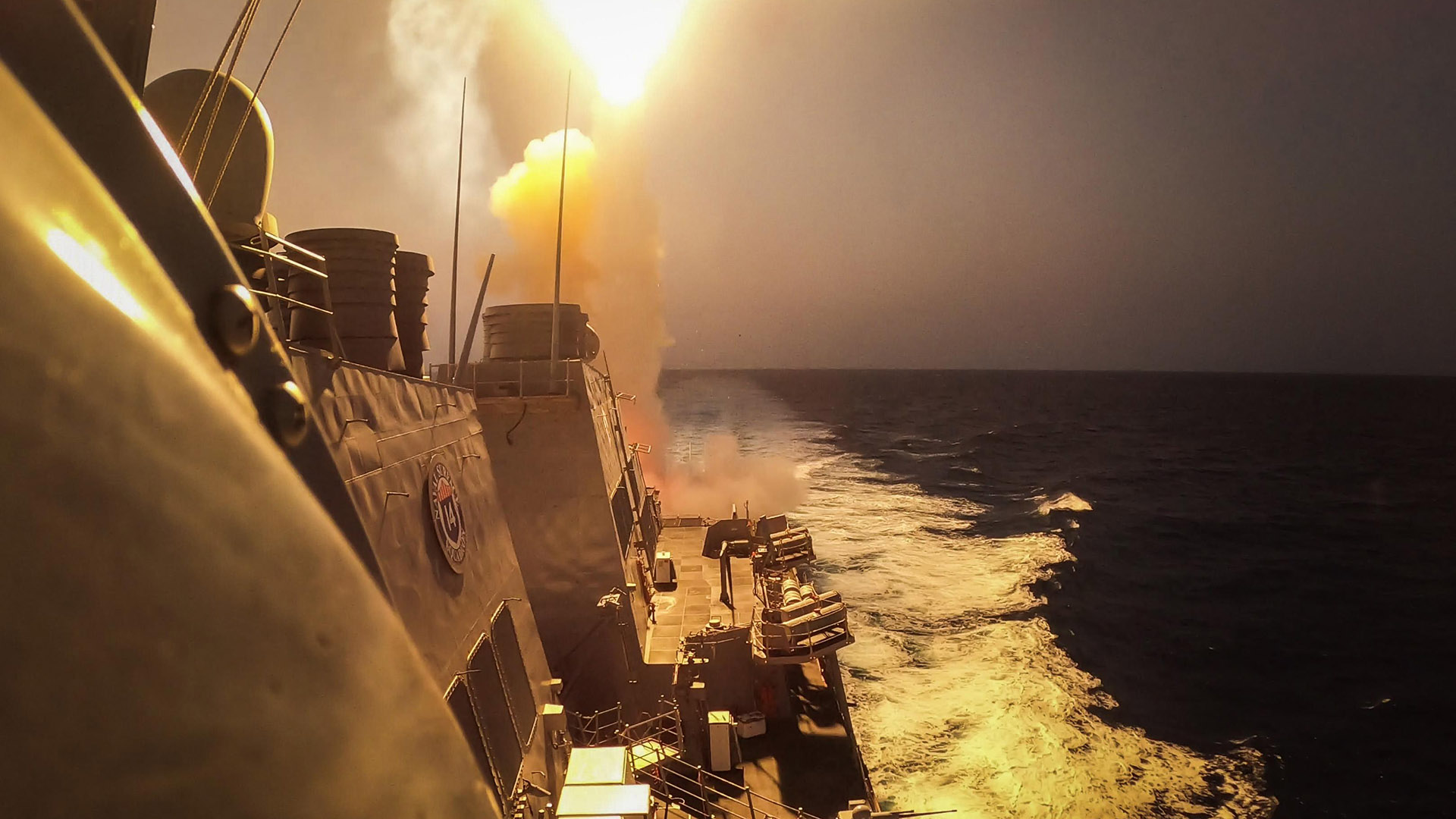

U.S. Navy destroyers currently in the eastern Mediterranean Sea fired about a dozen interceptors at Iranian missiles launched against Israel on Tuesday, said Air Force Maj. Gen. Pat Ryder, a Pentagon spokesman.
The destroyers USS Cole and USS USS Bulkeley were involved in the effort, Ryder told reporters at a Pentagon news conference. Ryder did not specify how many missiles the interceptors hit.
“They fired the interceptors,” Ryder told reporters. “We’re still assessing outcomes of that. I just don’t have more information to provide at this time.”
Ryder also declined to specify which type of interceptors the two destroyers fired at the Iranian missiles.
Washington Post reporter Dan Lamothe posted on X on Tuesday that U.S. destroyers in the Mediterranean Sea had downed some of those missiles.
Iran launched an estimated 200 ballistic missiles against Israel on Tuesday shortly after the Israel Defense Forces launched a ground incursion into southern Lebanon.
“No U.S. personnel were injured or harmed during the Iranian missile attack,” Ryder said on Tuesday.
Initial indications are that all the ballistic missiles were launched from inside Iran itself, Ryder said. No U.S. military ground-based interceptors or aircraft were used to shoot down any of the Iranian missiles, he said.

Ryder declined to answer reporters’ questions about whether the U.S. military would take part in an Israeli response against Iran, saying he would not comment on “theoretical or speculative operations.”
“I think broadly speaking, the U.S. has been clear that there will be security, economic consequences, should Iran attack, but I just don’t have anything to preview specifically as it relates to that,” Ryder said.
Subscribe to Task & Purpose today. Get the latest military news and culture in your inbox daily.
Defense Secretary Lloyd Austin recently ordered the USS Abraham Lincoln carrier strike group to remain in the eastern Mediterranean Sea along with USS Wasp Amphibious Ready Group and the embarked 24th Marine Expeditionary Group.
Deputy Pentagon Press Secretary Sabrina Singh told reporters on Monday that the U.S. military was also deploying “an additional few thousand” U.S. troops in fighter aircraft units to the Middle East.
Hours before Iran’s missile attack against Israel, U.S. Central Command posted on X that an F-15E, F-16, and A-10 squadron were on their way to the region “with one squadron having already arrived.”
Tuesday marked the second time this year that it launched a direct attack against Israel. In April, the U.S. Army, Navy, and Air Force all helped shoot down Iranian ballistic missiles, cruise missiles, and drones that had been launched against Israel.
At the time, the destroyers USS Arleigh Burke and USS Carney shot down between four and six ballistic missiles.
Following Tuesday’s missile attack, Ryder issued a warning to Iran.
“To be crystal clear, as Secretary Austin has said: Should Iran, its partners or its proxies use this moment to target American personnel or interests in the region, the United States will take every necessary measure to defend our people,” Ryder said.
UPDATE: 10/01/2024; This story was updated with additional comments from Air Force Maj. Gen. Patrick Ryder.
The latest on Task & Purpose
- Command chief fired at Keesler Air Force Base after investigation ‘warranted removal’
- Marine Corps rolls out plan to overhaul marksmanship training for the first time in a century
- Army meets recruiting goal with soldiers who are older or need extra prep
- Nine college lacrosse players hospitalized after workout led by Navy SEAL graduate
- Surge in Marines staying in the Corps past their first enlistment
